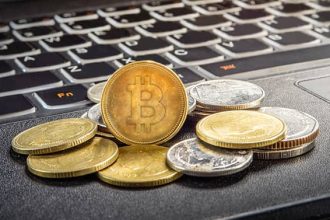Start-ups need money, but finding an investor can’t be called an easy task. An entrepreneur’s main pain is where to find funding for the project. And where there is an acute problem, there is always room for scammers.
While engineers spend a lot of time developing the product, the marketing team is looking for a big investment to scale the business once the product is ready. During this time, you can meet a huge number of industry leaders, negotiate partnerships as well as encounter outright scams.
It is important to realize that while you are diligently seeking funding, you are ready to grab every opportunity that looks promising. This is what fake investors take advantage of. Therefore, in this article we will tell the real stories of the developers, how they have been tricked several times and how they have managed to expose the deception.
Billionaires from Paris
Scheme:
- You are being contacted by an investor’s “consultant”.
- The call is being arranged.
- You are offered to discuss business in person.
- You try to convince them that you are ready for the online conversation.
- “Consultant” insists that his/her client will handle the case only in person.
- You are invited to a meeting in a capital city (in our case, Paris) at an expensive restaurant.
- The meeting is held in rapturous tones, everyone admires your project, however they say that they need to take time to think about it, assuring that they will continue communication with you online.
- After the meeting, you are offered two ways to get the money: in cash or by bank transfer to the company account.
- You cannot bring cash if the investor is from another country. That leaves the transfer.
- You are asked to pay brokerage and transfer fees, but only AFTER you have received the investment.
- The money falls into your account – you already see your business starting to grow.
- You transfer 10% of your investment to “consultant”. Only in Bitcoins – this is mandatory.
- The investor withdraws the transfer and walks off into the sunset. You end up with no investment and a large loss of cryptocurrency, which you can’t get back.
After long conversations on the phone and the conviction that one is urgently looking for a project to invest in, I nevertheless decide to fly to Paris. I met with “investors”, who described my project as the product of the century.
Afterwards, I returned home, where we continued our talks over the phone. The “consultant” notified me with enviable vigor about every step of the decision-making process and when the moment to receive the investment came, I was presented with a choice: bank transfer or cash? There have been offers from the team to transfer funds by private helicopter or something like that. But at this point I had already guessed that it smells fishy. Almost immediately, the “consultant” started talking about brokerage fees, which had to be paid in advance, and we stopped talking, realizing that they were just scammers. 10% of a million in Bitcoins is something we wouldn’t have agreed to under any circumstances.
Or maybe we just chickened out? Even better, because a few weeks later this case was described in the media, only with another company as the victim.
Doppelgangers from Amsterdam
A few weeks later, our marketer received a call from a similar “consultant” in the Netherlands. The conditions were exactly the same – it was urgent to travel to Amsterdam. The marketer simply said he was already familiar with their scheme and the offers from the “country of tulips” stopped.
Stellar founder Jed McCaleb from Mumbai
After the Paris case, we became much more cautious and decided that we would only deal with investors whose identity could easily be verified. So when Jed McCaleb from Stellar contacted us, we weren’t even worried: the LinkedIn page looked very plausible, with over five thousand contacts. Also, the scammers had some very good email domain names, like [email protected], which was credible.
PseudoJed contacting our team
The scheme:
- Call is being arranged.
- An online meeting takes place with your entire team to press the CEO afterwards. “Jed McCaleb” is excited about your project and is almost ready to get the money out of his pocket.
- You receive a beautiful offer with conditions where you have to deposit 2000 XLM (Stellar platform currency) in order for the fund to be convinced that you are not a scammer.
- Recipients walk off into the sunset.
The beauty of this scam is that it was very well thought out. There was even a fake Jed on the video call: a deepfake was probably used – the person on the other side of the screen had the face of Stellar’s founder. It didn’t last long, though. Referring to poor connectivity (yep, one of the richest people on the planet couldn’t afford optical fiber), he had to turn off the video.
But even this stunt went unnoticed by the team. Pseudo-Jed was given away… by his accent. The crook had perfect English, but he couldn’t hide his Indian origin. There was no doubt in anyone’s mind that we were talking to another mammoth hunter.
A checklist of a real investor
By the way, these are by no means all the cases where our team has been tried to mislead. But for now, we can take a break from the influx of scammers and present you with a list of points to help you avoid falling into the scammer’s trap.
- Always demand video conferencing. Not everyone is strong on AI tools yet and replacing their face with the appearance of George Soros isn’t easy. At the very least, it’s hard to make sure no one notices the switch.
- The investor is interested in numbers. He/she will be interested in your KPI and growth plans and won’t concentrate on admiring a cool gizmo you have come up with.
- The investor has no time. A foundation or individual will give you 10-15 minutes. And won’t spend a Sunday evening chatting about your ambitions.
- Investors don’t need money up front. This is without comment – just don’t pay any commissions. Millionaires aren’t interested in saving $100 at your expense – they risk much larger sums.
I hope this experience will save you from financial losses. Good luck with your projects!















